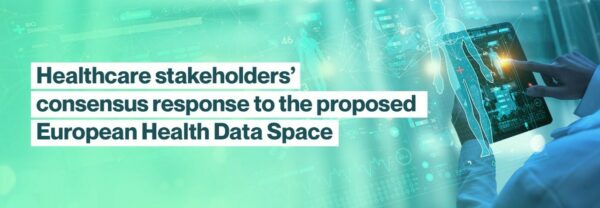7 recommendations for the European Health Data Space to improve patient outcomes, empower EU citizens, and strengthen health systems
On 20 October, the European Association of Urology (EAU) joined a group of 35 stakeholders in welcoming the European Commission’s proposal on the European Health Data Space (EHDS). The stakeholders, which include medical professional and research organisations, patient representatives, industry associations, and data collaborations strongly support the aims of the EHDS as proposed by the European Commission. We believe the adoption of the new legislation “can bring important European alignment to, and rapidly scale up, well-governed access to health data sets for the delivery of healthcare services but also for a wide range of secondary use purposes for better health outcomes.”

The consensus statement encourages decision-makers to strongly support this Regulation and to engage with stakeholders to ensure the final Regulation optimises its potential. The statement also formulates several recommendations to consider when developing the more specific implementation plans to put this Regulation into practice across the Member States:
- A broad range of stakeholders must be strongly involved from the outset of the process to guarantee the success of the EHDS.
- The EHDS must align with all relevant horizontal and sectoral European laws.
- There must be harmonised interpretation and implementation of the Regulation across the EU.
- Approvals for secondary use of health data must be consistent and harmonised across Europe.
- The scope of EHR systems must be defined clearly within the Regulation.
- The successful implementation of the EHDS must be adequately resourced.
- 7. Existing health data infrastructures must be leveraged to allow continuity and build on existing expertise.
The negotiations on the European Health Data Space legislation will have an impact on the two EAU-led IMI consortiums, PIONEER and OPTIMA, who aim to harness the value of Big Data and Real World Evidence to inform unmet research needs and to inform clinical practice guidelines.
Read the full statement here.


